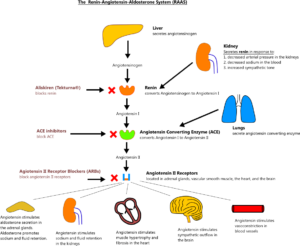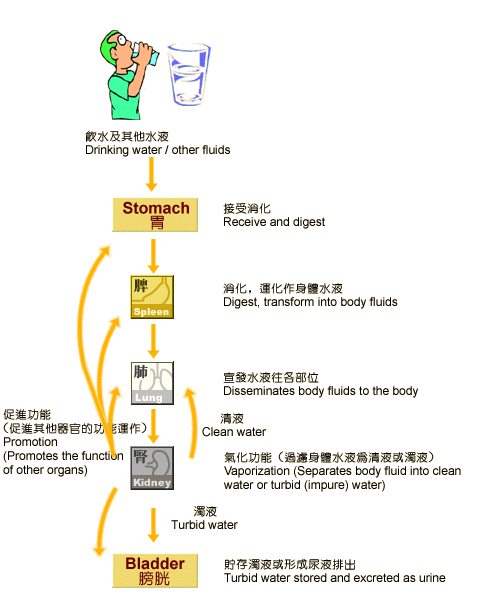
Dampness is a word you may hear often from your Traditional Chinese Medicine (TCM) practitioner when delivering a diagnosis. “Dampness?” you say while mentally checking that your face is not registering the confusion and concern you are feeling. “I have Dampness? What is…, I mean should I be worried?” you may say softly to your practitioner, who seems so comfortable in this very foreign and yes, even odd medicine.
I get it, the diagnosis of Dampness seems about as clear as a foggy morning. Hoping to alleviate your frustration and concern about this vague TCM concept, let me share some basic understanding about how TCM practitioners use this terminology. It is a condition seen in both adults and children, seemingly more common in industrial societies who indulge in a rich diet.
What Is Internal Dampness?
In TCM, Dampness is the source of many diseases and a very broad subject. Dampness is the result of a disruption of the body’s water metabolism and leads to phlegm and stagnation of qi and blood. To keep it simple, I will share about “Internal Dampness” which is one of the most common presentations of this pathology. Internal dampness can be thought of as high humidity inside the body. It is caused by a disturbed water metabolism due to a compromised Spleen (digestive) system.
Symptoms of internal dampness can include a feeling of heaviness, swelling (edema) or water retention, a distended abdomen, cellulitis, any type of phlegm discharge, nodular masses (lymph nodes), loose bowels, or a cloudy appearance of body fluids. Sluggish energy and weight gain are also signs of a damp condition. Even intestinal rumblings are due to dampness in the intestines. Since dampness is a disruption of normal water metabolism some symptoms, such as diarrhea, may induce dehydration while maintaining a damp condition.
 Disharmonies between the Spleen and organ systems of the Liver, Lungs, and Kidneys all cause some form of water pathology. Our amazing bodies are sensitive to water volume changes in our vascular system. Too high or too low of a volume will result in high or low blood pressure. This volume change will induce a physiological cascade influenced by hormones involving the liver, lungs, and kidneys, and the disrupted water metabolism. Let’s look at the Renin-Angiotensin-Aldosterone System (RAAS) as one example of how complex the body is with regards to water metabolism. Then it will be easy to see why treatment of dampness often takes time.
Disharmonies between the Spleen and organ systems of the Liver, Lungs, and Kidneys all cause some form of water pathology. Our amazing bodies are sensitive to water volume changes in our vascular system. Too high or too low of a volume will result in high or low blood pressure. This volume change will induce a physiological cascade influenced by hormones involving the liver, lungs, and kidneys, and the disrupted water metabolism. Let’s look at the Renin-Angiotensin-Aldosterone System (RAAS) as one example of how complex the body is with regards to water metabolism. Then it will be easy to see why treatment of dampness often takes time.
Angiotensinogen, an enzyme produced by the Liver, is an important part of the RAAS cascade which assists in the bodies water balance. The kidneys are also involved by producing Rennin that converts Angiotensinogen from the Liver to Angiotensin 1, assisting in the regulation of water balance in the above-mentioned system. The lungs contribute to water metabolism by producing the ACE enzyme (Angiotensin Converting Enzyme), which via the RAAS cascade convert Angiotensin I to Angiotensin II, which affects the Adrenal glands, and alters water balance in the body. Grief and melancholy stifle Lung qi disrupting the balance of enzymes and hormones in the body which can affect water metabolism. Aldosterone, a mineral corticoid hormone of the adrenal glands (part of the TCM Kidney system) also regulate water balance in the body via the kidney nephron.
Diagnosing Dampness
According to TCM, any obstruction in the meridians will ultimately affect water metabolism adversely. Your TCM practitioner will ask you to stick your tongue out. She will be looking for signs of internal dampness such as a thick or puffy tongue with teeth marks or indentions on the sides, and a thick-looking tongue coating. Your mouth may not feel fresh, even though you have just brushed it. The pulse of a person with dampness is commonly described as slippery or wiry.
The degree of the insulting pathology, the length of time it has caused disruption, and the systems involved determine the symptoms and progression of dis-ease within the body. This, in turn, determines the treatment course.
Treating a Dampness Diagnosis
In some locales like Houston, high humidity is a daily part of life. Residents in these areas learn how to conduct their lives in order to avoid the unpleasant complications of humidity by keeping the inside of their homes and cars cool and dry or avoiding physical exertion outdoors. Similarly, to reduce or eliminate internal dampness to avoid further damage that leads to disease, we must learn how to keep the moisture inside our bodies within a healthy metabolic range. To do this, you must understand what causes the internal dampness, the symptoms, and what you can do about it.
 To begin with, the term “dampness” in Traditional Chinese Medicine (TCM) physiology, refers to the water we ingest through either drinking or eating food. This water is received by the Stomach and digested then absorbed by the Spleen (digestive) system. The Stomach prefers dampness using it to liquefy the food into what is called chyme, before it passes into the Spleen (digestive) system. But the Spleen (digestive) system prefers a drier environment. Dampness dilutes and interferes with the digestive process after food and liquids leave the Stomach.
To begin with, the term “dampness” in Traditional Chinese Medicine (TCM) physiology, refers to the water we ingest through either drinking or eating food. This water is received by the Stomach and digested then absorbed by the Spleen (digestive) system. The Stomach prefers dampness using it to liquefy the food into what is called chyme, before it passes into the Spleen (digestive) system. But the Spleen (digestive) system prefers a drier environment. Dampness dilutes and interferes with the digestive process after food and liquids leave the Stomach.
Treating dampness requires a closely monitored regimen using herbs, acupuncture, moxa, and a balanced diet limiting alcohol, dairy, greasy, sweet, raw, and cold foods. As many patients present Dampness after decades of exacerbating issues with their water metabolizing processes, it can take a long time to determine the exact regimen that is useful to a patient. But anything that might compromise your digestive tract or as TCM calls it “the Spleen system” should be avoided at the start of treatment with experimentation to add things back after a healthy state is reached. Additional insults to your digestive system include chronic stresses such as mental overwork, pensiveness, and worry. These have a negative effect on the Spleen (digestive) system and contribute to a poor water metabolism. Dampness may also be due in part to un-natural substances in our food and water, which are difficult for our bodies to eliminate after ingestion.
Do You Have Dampness?
While there are some tell-tale signs such as water retention and chronic phlegm in the lungs, dampness presents itself in subtle ways and in different systems of the body. The only way to know for sure if dampness is holding you back from soaring to your highest potential, is to consult with an experienced TCM practitioner. If you do have dampness, your practitioner and you will work through a treatment plan monitoring and revising as improvements or setbacks are observed. You can expect herbal remedies, dietary and lifestyle recommendations, and acupuncture as part of your treatment plan. Often aroma acupuncture using medical grade essential oils, moxibustion, fire cupping, medical Qigong, and other TCM modalities are utilized.
Call today for a free TCM consultation.

